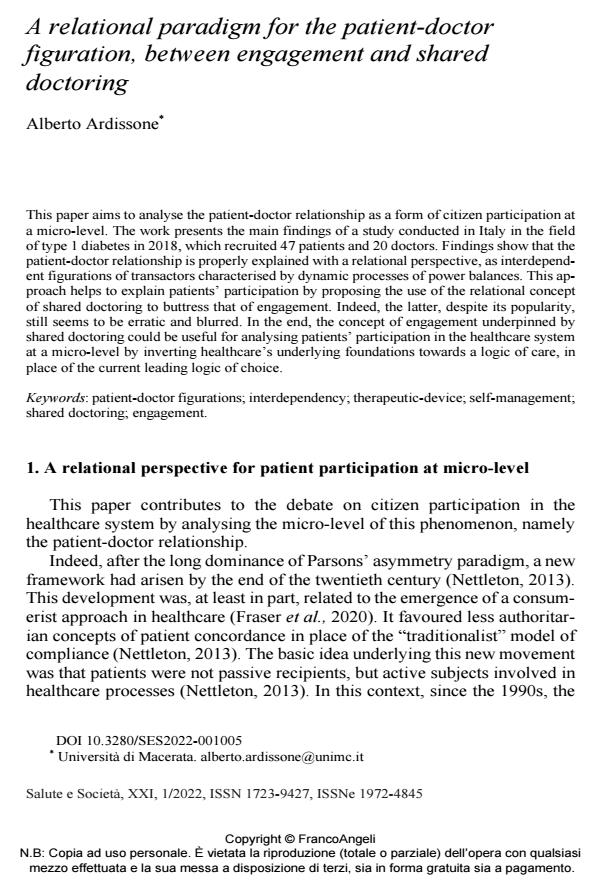A relational paradigm for the patient-doctor figuration, between engagement and shared doctoring
Titolo Rivista SALUTE E SOCIETÀ
Autori/Curatori Alberto Ardissone
Anno di pubblicazione 2022 Fascicolo 2022/1
Lingua Inglese Numero pagine 17 P. 63-79 Dimensione file 201 KB
DOI 10.3280/SES2022-001005
Il DOI è il codice a barre della proprietà intellettuale: per saperne di più
clicca qui
Qui sotto puoi vedere in anteprima la prima pagina di questo articolo.
Se questo articolo ti interessa, lo puoi acquistare (e scaricare in formato pdf) seguendo le facili indicazioni per acquistare il download credit. Acquista Download Credits per scaricare questo Articolo in formato PDF

FrancoAngeli è membro della Publishers International Linking Association, Inc (PILA)associazione indipendente e non profit per facilitare (attraverso i servizi tecnologici implementati da CrossRef.org) l’accesso degli studiosi ai contenuti digitali nelle pubblicazioni professionali e scientifiche
This paper aims to analyse the patient-doctor relationship as a form of citizen participation at a micro-level. The work presents the main findings of a study conducted in Italy in the field of type 1 diabetes in 2018, which recruited 47 patients and 20 doctors. Findings show that the patient-doctor relationship is properly explained with a relational perspective, as interdepend-ent figurations of transactors characterised by dynamic processes of power balances. This ap-proach helps to explain patients’ participation by proposing the use of the relational concept of shared doctoring to buttress that of engagement. Indeed, the latter, despite its popularity, still seems to be erratic and blurred. In the end, the concept of engagement underpinned by shared doctoring could be useful for analysing patients’ participation in the healthcare system at a mi-cro-level by inverting healthcare’s underlying foundations towards a logic of care, in place of the current leading logic of choice.
Parole chiave:patient-doctor figurations; interdependency; therapeutic-device; self-management; shared doctoring; engagement.
Alberto Ardissone, A relational paradigm for the patient-doctor figuration, between engagement and shared doctoring in "SALUTE E SOCIETÀ" 1/2022, pp 63-79, DOI: 10.3280/SES2022-001005